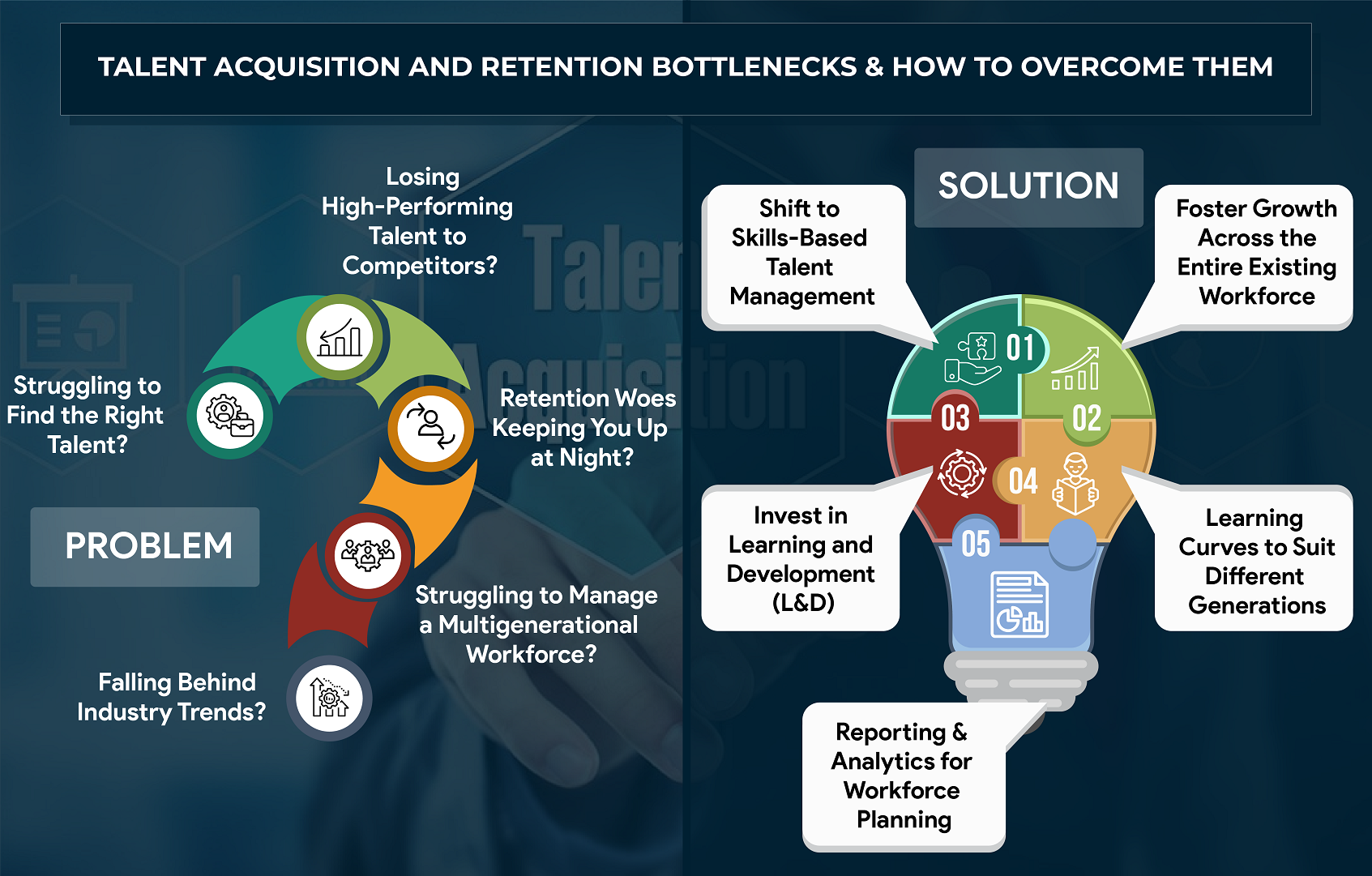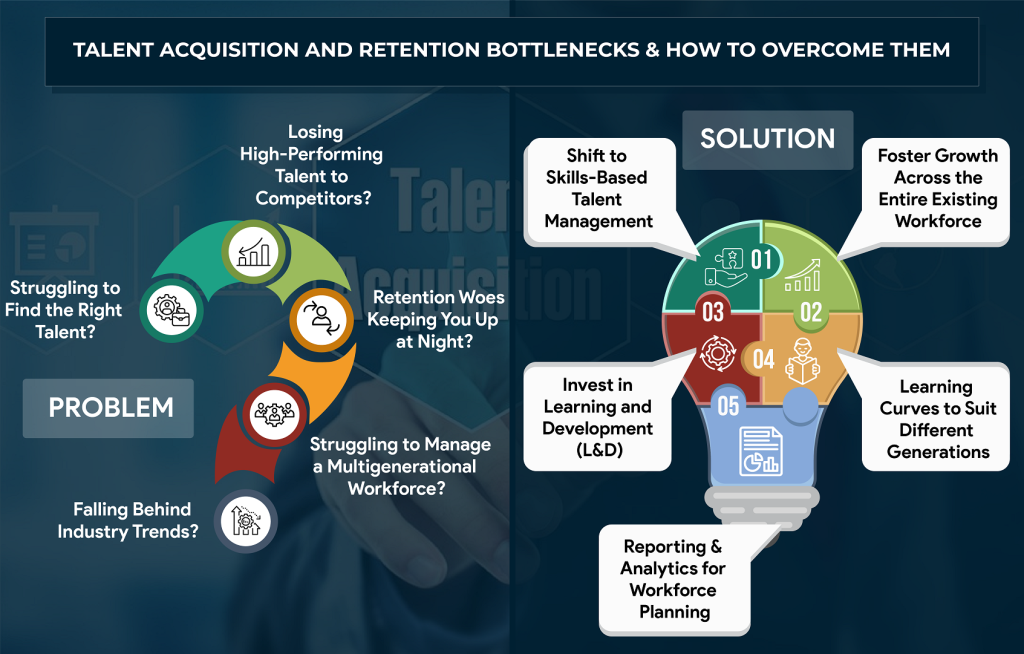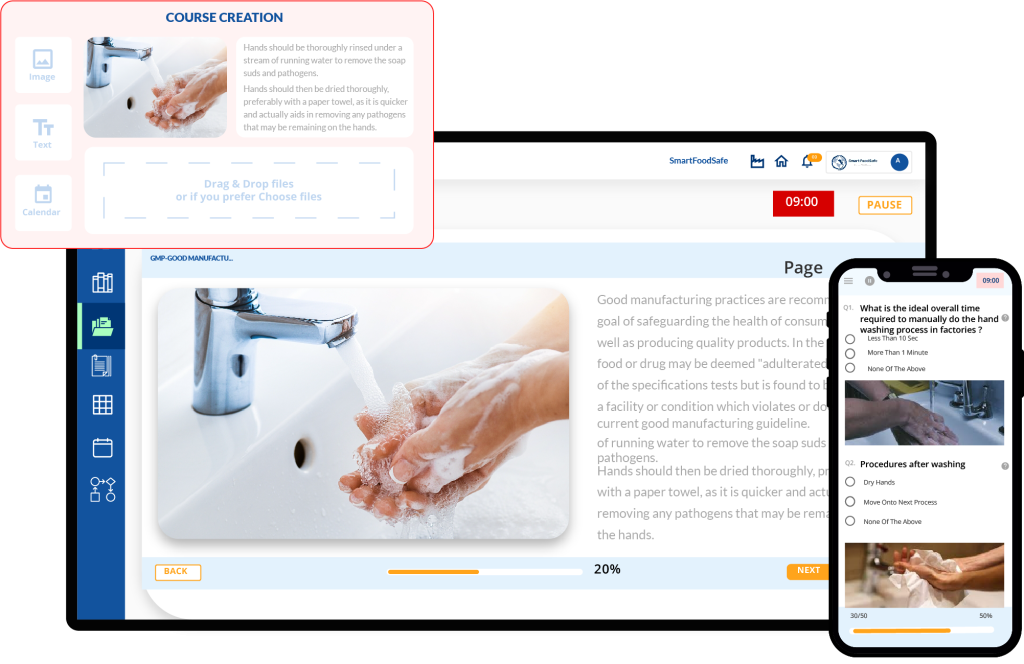
Do you know why a business needs a well-designed talent management strategy? This is simply because in recent times many companies have come to a profound realization that their most valuable asset isn’t just their products or services—it’s their human capital.
A successful strategy goes beyond hiring top talent; it’s about creating a workplace that inspires commitment and loyalty. As businesses navigate a fast-evolving landscape, talent acquisition and retention have become essential for securing and nurturing skilled employees who drive long-term success.
Understanding the Basics of Present-Day Talent Management
Talent, which represents the combined expertise, knowledge, and skills of a workforce, has become a cornerstone of organizational success. To fully leverage this invaluable resource, organizations are turning to talent management—an insightful strategy aimed at acquiring, developing, engaging, and retaining exceptional employees.
Talent acquisition focuses on identifying, attracting, and hiring skilled professionals who can drive the organization’s growth and success. In contrast, talent retention involves implementing measures to keep employees motivated, engaged, and loyal to the organization over the long term.
Effective talent acquisition begins with assessing the organization’s needs and defining the roles and skills required to meet its objectives. This process involves sourcing candidates through various channels, such as job boards, social media, professional networks, and employee referrals, followed by screening, interviewing, and evaluating them to ensure a strong fit with the organization.
Once talented individuals are onboarded, retaining them becomes essential to sustaining a stable and productive workforce. Employee retention strategies center on creating a positive work environment, offering competitive compensation and benefits, providing growth and development opportunities, and recognizing and rewarding contributions to the organization.
Why Excelling in Talent Management Important for Organizations?
Talent management serves as a cornerstone of organizational success. Companies that excel in retaining top talent are better positioned to attract high-performing individuals who drive innovation and boost productivity. Successfully retaining skilled employees minimizes turnover costs, ensures continuity of knowledge and expertise, and fosters greater organizational loyalty and morale.
The significance of talent management cannot be overstated, as it profoundly impacts every aspect of an organization’s performance and long-term potential.
- Enhanced Performance: Aligns individual goals with organizational objectives, boosting efficiency and enabling the achievement of strategic goals.
- Succession Planning: Ensures smooth leadership transitions by identifying and developing potential leaders within the organization.
- Employee Engagement: Fosters commitment and innovation by addressing employee aspirations, providing growth opportunities, and creating a positive work environment.
- Reduced Turnover: Mitigates operational disruptions and costs by enhancing job satisfaction, career growth, and work-life balance, leading to increased employee loyalty.
- Skill Development: Promotes continuous learning, equipping employees with relevant skills to adapt to changing industry trends.
- Innovation: Encourages creativity and problem-solving through a diverse and skilled workforce nurtured by effective talent management.
- Effective Recruitment: Optimizes hiring by aligning recruitment strategies with organizational needs, resulting in better candidate selection.
- Cost Efficiency: Saves costs by investing in and retaining existing talent rather than frequently hiring and onboarding new employees.
- Sustainability: Builds a steady workforce pipeline, minimizing disruptions and ensuring long-term organizational stability and success.
For effective talent management, organizations must consistently adapt to the evolving needs and expectations of their workforce. This involves leveraging technology to streamline training processes, addressing the preferences of the modern workforce, and establishing a culture that values diversity, inclusion, and employee well-being.
Talent Acquisition and Retention Bottlenecks & How to Overcome Them
Attracting and retaining skilled employees is a persistent challenge for businesses today. From a scarce talent pool to rapidly evolving employee expectations, organizations must navigate an intricate web of hurdles. But here’s the good news: innovative solutions in talent management are emerging to address these challenges head-on, empowering organizations to thrive despite the odds. Below, we explore how specific strategies can help businesses overcome the most pressing challenges and transform their talent management programs.
Challenge 1: Scarcity of Skills and Talent
With demand for specialized skills surpassing the supply, organizations often find themselves competing for the same few qualified professionals. This scarcity is amplified by the fast-paced emergence of new technologies and industries.
How to Overcome It:
- Shift to Skills-Based Talent Management: Forward-thinking companies are moving away from rigid degree requirements and emphasizing practical skills and capabilities. By broadening the candidate pool to include non-traditional applicants—such as those who’ve gained skills through certifications, online courses, or practical experience—organizations can address critical skill gaps more effectively. This approach not only widens the talent pipeline but also fosters greater inclusivity in hiring.
Challenge 2: Intense Competition for High Performers
Top talent is always in high demand, with multiple industries vying for the same pool of highly skilled professionals. This fierce competition can leave organizations stretched thin as they scramble to secure a limited number of high performers, often neglecting the potential of their existing workforce.
How to Overcome It:
- Foster Growth Across the Entire Workforce: Instead of placing all focus on attracting a handful of high performers, organizations can reduce reliance on external competition by equipping their entire workforce with opportunities for consistent growth and development. By investing in robust training programs that target employees across all levels, businesses can upskill their workforce, turning overlooked talent into valuable contributors. Equal investment in talent development helps reduce the pressure of chasing high performers externally, giving organizations greater flexibility in filling roles with competent, well-trained individuals.
Challenge 3: Challenges in Employee Retention
High turnover rates can disrupt operations and increase recruitment costs. For many, retention strategies fail due to poor alignment with employee needs, limited career progression, or an unsupportive work culture.
How to Overcome It:
- Invest in Learning and Development (L&D): Employees crave growth. By providing access to innovative learning platforms, microlearning opportunities, and continuous upskilling programs, businesses not only boost employee satisfaction but also enhance internal capabilities. Employees are more likely to stay with organizations that actively invest in their growth, turning retention challenges into an opportunity for loyalty building.
Challenge 4: Managing Generational Diversity
A multigenerational workforce brings diverse expectations for communication styles, workplace policies, and career goals. Managing these differences is key to creating a harmonious and productive environment.
How to Overcome It:
- Dedicated Learning Curves for Multigenerational Needs: Establishing tailored learning and development (L&D) programs that cater to the unique needs and learning styles of each generation ensures that all employees remain equipped with the skills they need to thrive. By focusing on personalized training approaches—whether through digital learning platforms, hands-on workshops, or microlearning—businesses can keep their workforce aligned with industry trends and evolving job requirements.
Challenge 5: Adapting to Industry Trends
Keeping pace with new technology and other relevant skills is essential for staying competitive, yet many organizations struggle to adopt the latest tools.
How to Overcome It:
- Leverage Analytics Tools for Workforce Planning: Advanced analytics can identify gaps in employee skillset and highlight areas where training is needed. By strategically implementing technology and ensuring employees are equipped to use it effectively, businesses can stay ahead of the curve.
By embracing these innovations, organizations can effectively navigate the complexities of talent acquisition and retention in the evolving business landscape of 2025.
Smart Training as Your Companion to Build a Strong Talent Management Strategy
Smart Training equips organizations with a comprehensive and tech-enabled platform to streamline every aspect of training and development. Its advanced capabilities help you overcome common talent management hurdles and build a sustainable strategy.
Configurable Learning Paths for Structured Training
Smart Training enables organizations to design structured, goal-oriented training programs tailored to diverse employee needs, from onboarding to skill enhancement and compliance.
⇒ Comprehensive Learning Structure: Provides a step-by-step roadmap for employees, ensuring clarity, better understanding, and long-term retention.
⇒ Course Bundling for Targeted Goals: Groups specific courses to focus on skill development areas or organizational objectives, avoiding information overload.
⇒ Tailored Learning Experiences: Customizable course settings like duration, grading, and certification align training efforts with business needs.
This approach creates an organized framework where employees can connect and apply learned concepts effectively, minimizing skill gaps and fostering growth.
Integrated Assessments to Measure Knowledge and Progress
Smart Training integrates assessments like quizzes and Q&A directly into training programs, offering flexibility to evaluate employee performance while providing actionable feedback.
⇒ Reinforcement Through Testing: Regular assessments solidify knowledge, ensuring employees can recall and apply learned skills.
⇒ Tracking Progress: Monitors employee performance to gauge knowledge retention and identify areas for improvement.
With these tools, employees gain confidence in their abilities while employers can track and fine-tune their training strategies.
Automated Refresher Modules for Skill Retention
Smart Training automates refresher training, enabling businesses to schedule periodic reviews of critical concepts and skills to ensure continuous learning.
⇒ Repetition for Long-Term Memory: Revisiting key topics ensures knowledge retention over time.
⇒ Compliance & Industry Updates: Helps teams stay up-to-date with the latest regulations and best practices.
⇒ Customized Retention Plans: Configurable settings ensure refresher training aligns with organizational priorities and schedules.
This proactive approach strengthens skill retention, keeping employees equipped to meet evolving business challenges.
Blending Collaborative and Independent Learning Approaches
Smart Training fosters a balanced learning environment, promoting both autonomous and collaborative training experiences.
⇒ Engagement Through Collaboration: Group learning allows employees to share insights, encouraging team cohesion and knowledge sharing.
⇒ Flexibility of Self-Learning: Employees can progress at their own pace, ensuring deep comprehension of the material before advancing.
This dual approach creates a culture of continuous learning, where employees feel empowered to grow individually and as part of a team.
Skill Gap Analysis for Targeted Development
Smart Training’s skill gap analysis tool highlights areas for improvement while providing data-driven insights to refine training strategies.
⇒ Identifying Weak Spots: Pinpoints skill deficiencies, enabling targeted interventions for improvement.
⇒ Measuring Growth: Tracks employee performance through completed courses and programs to ensure effective knowledge application.
⇒ Data-Driven Decisions: Visual skill matrices and reports enable smarter training strategy optimization.
By continuously monitoring and analyzing progress, Smart Training ensures employees develop the right skills to excel.




